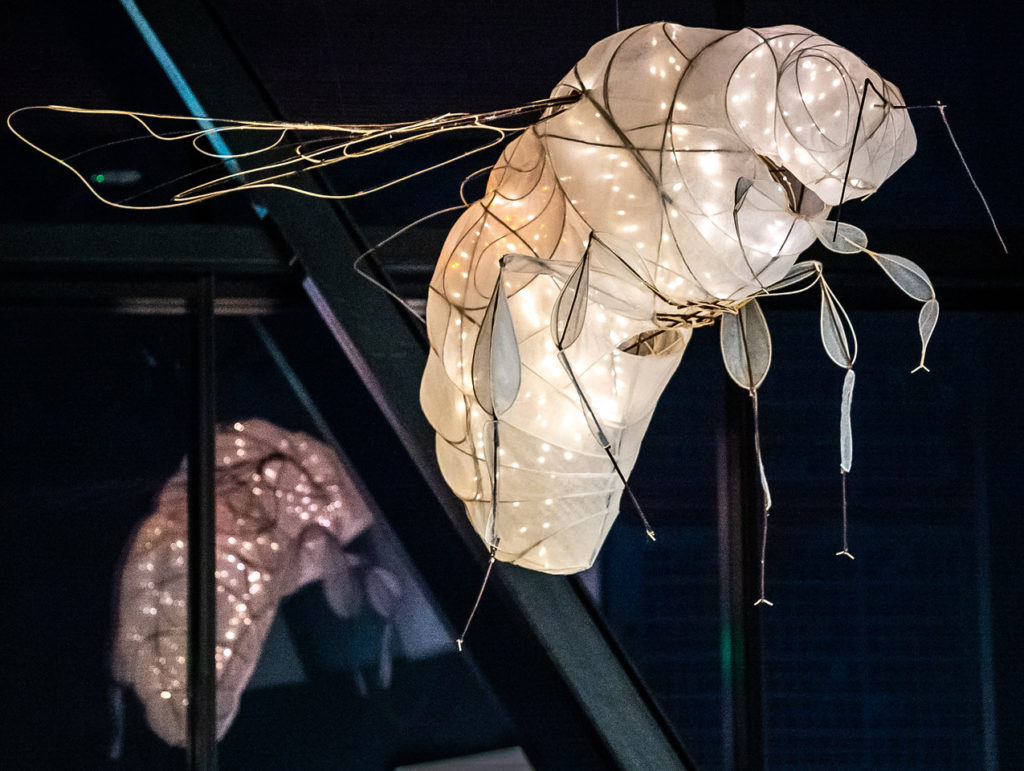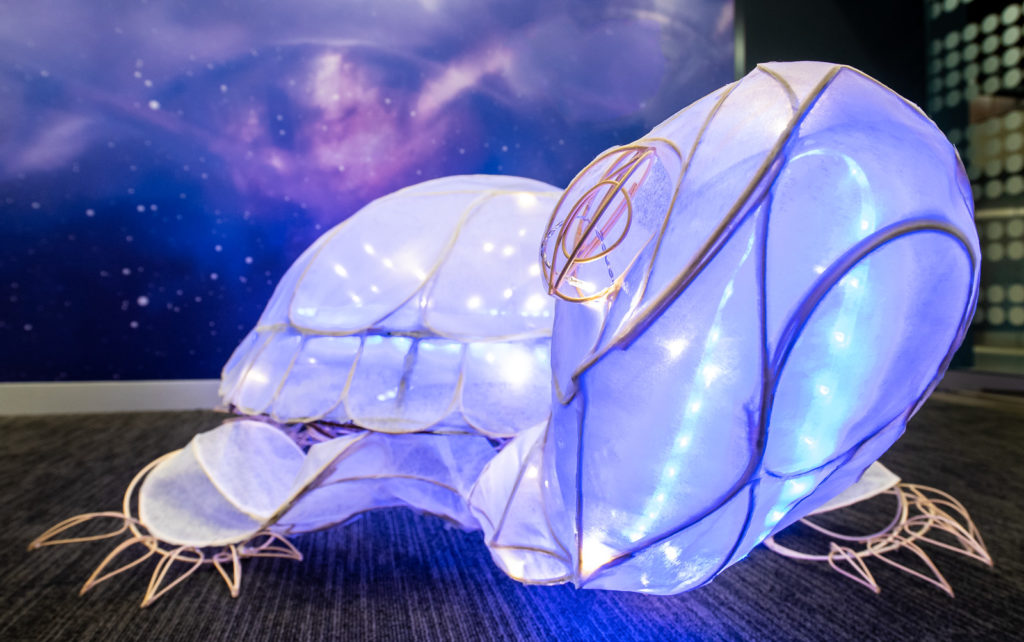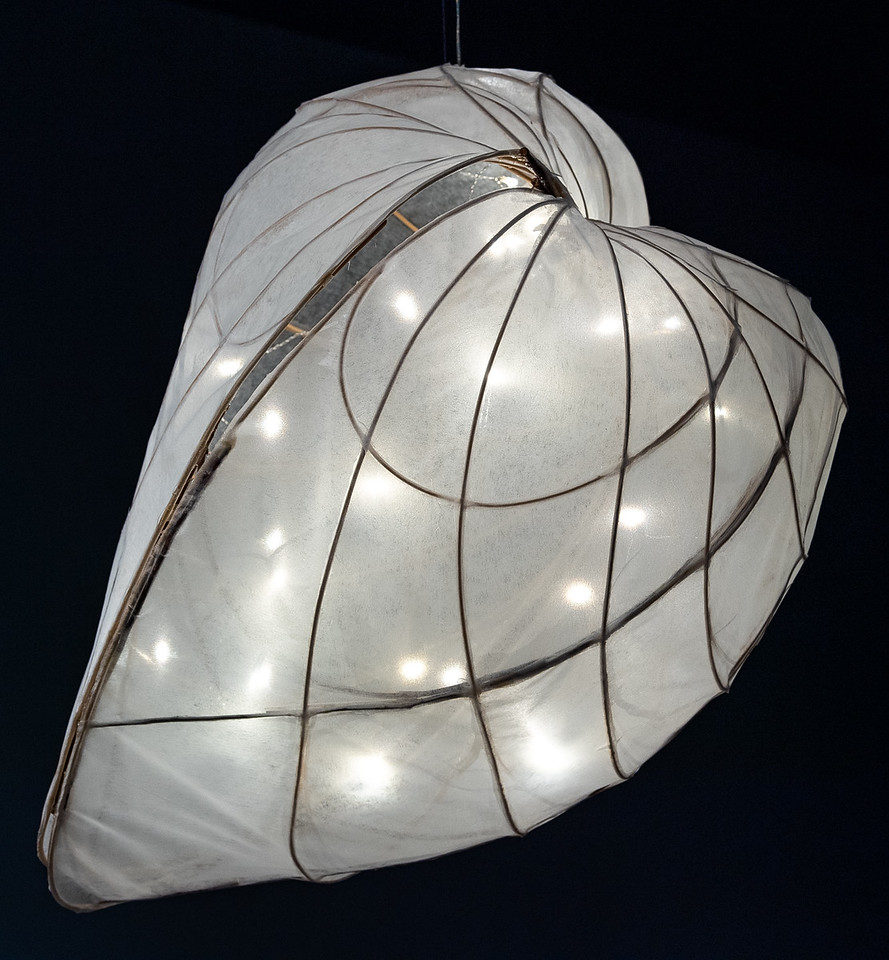
Illuminating Forms
Shedding Light on Endangered Species
On view through January 5, 2020
Anna Cerelia Battistini is a sculpture and fiber artist from St. Paul. She specializes in large, internally lit lanterns made of willow, rattan, and paper. In the tradition of British lantern festivals, her practice often includes community participation and public display. During three months in residence at the Bell Museum, Battistini has developed a series of six large paper lanterns exploring endangered, threatened, and special concern species in Minnesota. Find her sculptures installed throughout the Minnesota Journeys galleries.
The Resident Artist Research Project is made possible in part thanks to generous support provided by the McKnight Foundation.
Artist’s Statement
Scientific specimens have been an important tool for helping me understanding how an animal is put together. But looking at a specimen doesn’t tell me how an animal moves or what its postures are when it’s alive. Working with the Bell’s collections has allowed me to look at all sides of a specimen to really understand its form. The goal of my work is to bring the form to life for my viewers.
Getting a subject’s physical construction right isn’t the only thing that’s important to me in building these sculptures. I’m also interested in what is it that is essential about the species, and what really captures it for viewers in this setting. What qualities make an animal correct, and what qualities do I give it that make it art? When materials, texture, and color are removed, what’s left that allows us to identify the thing? I’ve appreciated having the opportunity to have these conversations with Bell visitors.
Learn more about each of the species featured in Illuminating Forms by clicking on the purple tabs below.
Rusty Patched Bumble Bee (Bombus affinis)

Endangered
As of 2019, this species is Minnesota’s official state bee. These bees used to thrive in the tall grasslands and prairies of the upper Midwest. As humans replace biodiverse landscapes with monocultures such as farm fields and mowed lawns, this species struggles to survive.
You can help the rusty patched bumble bee, and all bees, by planting a variety of native plants in your yard and by avoiding pesticides that can kill bees and other pollinators.
Visitors can read more about this species in the Imagine the Future gallery.
Read the full species profile on the US Fish & Wildlife Service website.
Minnesota Department of Natural Resources Rare species definitions
A species is considered endangered if the species is threatened with extinction throughout all or a significant portion of its range within Minnesota.
A species is considered threatened if the species is likely to become endangered within the foreseeable future throughout all or a significant portion of its range within Minnesota.
A species is considered a species of special concern if, although the species is not endangered or threatened, it is extremely uncommon in Minnesota, or has unique or highly specific habitat requirements and deserves careful monitoring of its status. Species on the periphery of their range that are not listed as threatened may be included in this category along with those species that were once threatened or endangered but now have increasing or protected, stable populations.






